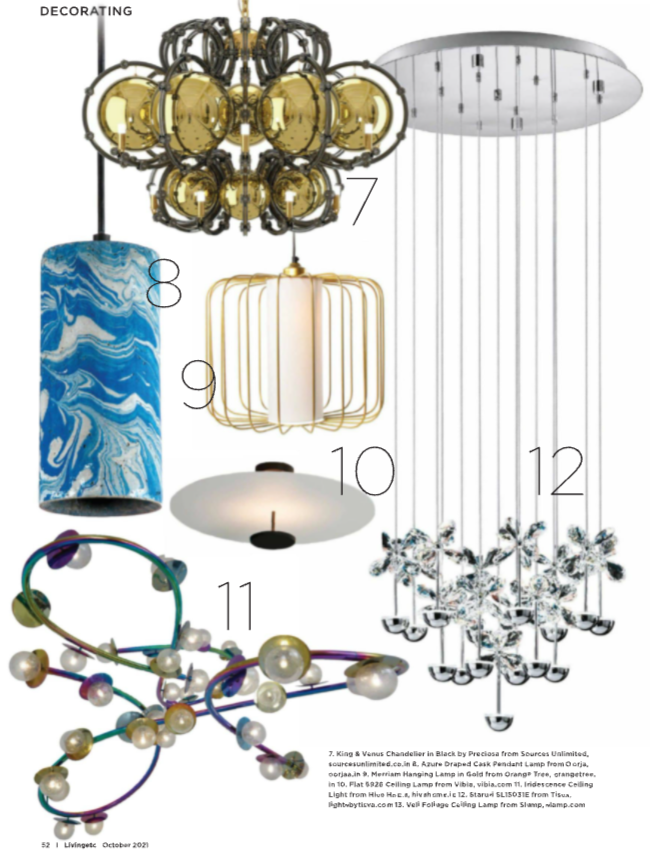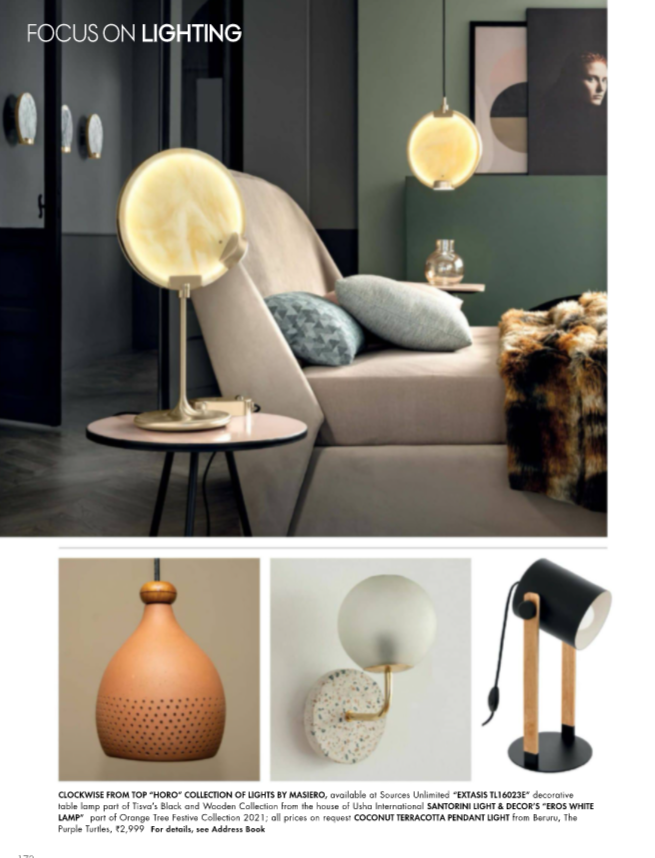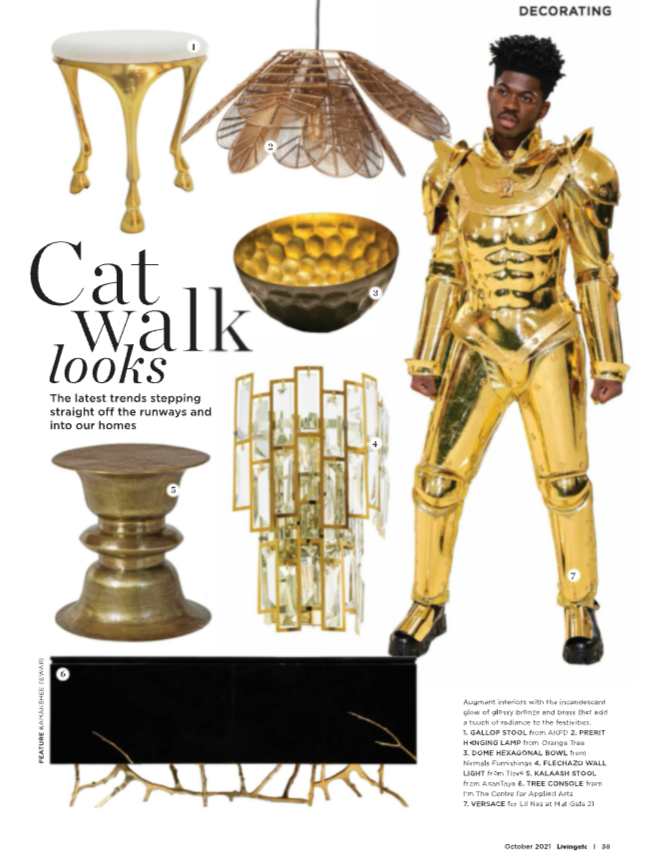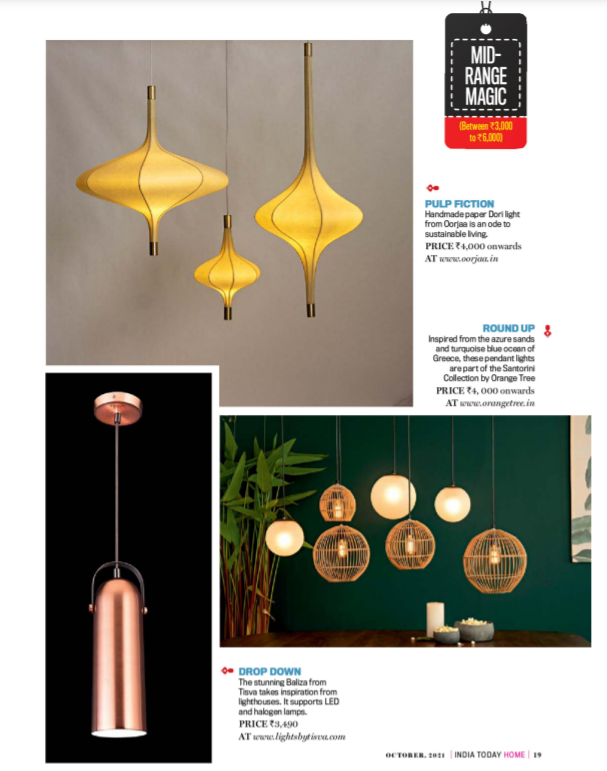The light produced by passing electric current through vapour or gas is of a higher intensity than light produced by passing electricity through filaments. Electric Discharge Lamps are more efficient and have a longer life than filament based lamps (Incandescent lamps).
Fluorescent Lamps
Fluorescent Lamps work by passing an arc/wave of electric current through mercury vapour. A pair of Cathodes is located at each end of the tube. When there is sufficient voltage difference between the two (brought about by a Ballast, which is also responsible for regulating the voltage) it creates an arc of electric energy through the mercury vapour, connecting both the Cathodes. This arc in turn increases the energy levels in the mercury molecules present in the vapour causing them to change energy levels, during which they discharge light and heat/UV waves. The generated waves hit the phosphor coating on the inner walls of the tube causing them to fluoresce (become luminous) and emit light.
As light is emitted from the tube walls, the entire length of the tube turns into a light source. The selection of kind of phosphor and other additions determine the type of light emitted: Ultraviolet, Coloured or the commonly seen white light.
There are two types of Fluorescent Lamps, differentiated on the basis of their Cathodes. There are Cold Cathodes and Hot Cathodes lamps. It is to be noted that the two names are very misleading, as Cold Cathodes dissipates more heat than Hot Cathodes.
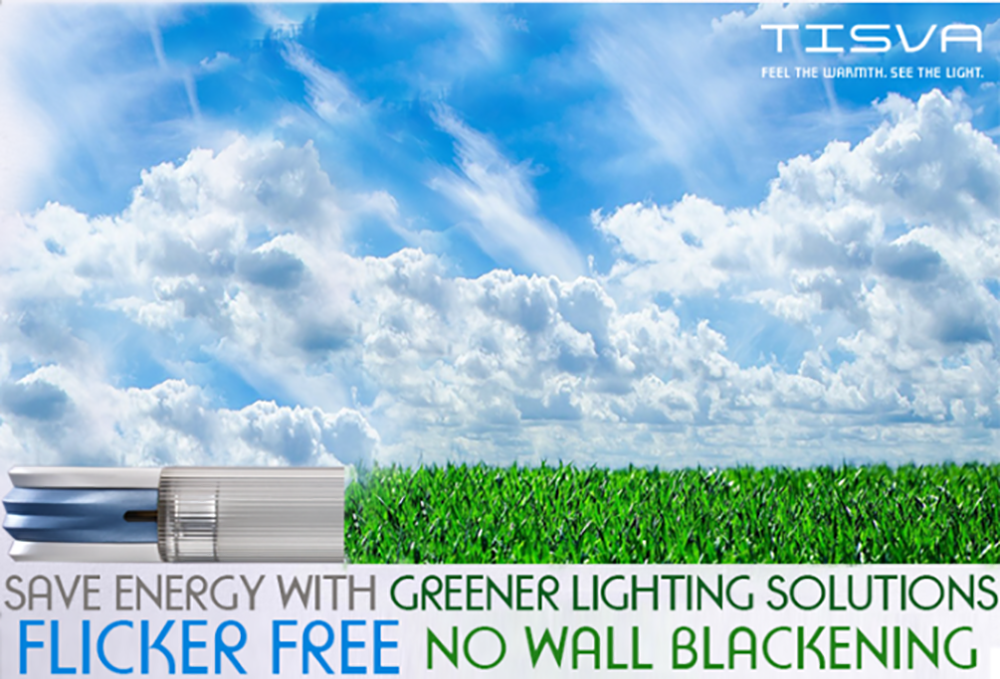
Cold Cathodes
The Cold cathode lamp is a thimble-shaped cylinder of soft iron, which is sometimes coated with emissive materials. The voltage drop/difference between the cathodes needs to be higher in cold cathodes than their counterpart. Therefore it needs more wattage, which in turn generates more heat. The efficiency of these lamps is low.
Cold Cathode Fluorescent Lamps (CCFL) are easily dimmable and provide instant start. They also have a longer life span than Hot Cathode Lamps. Cold Cathode lamps are generally used for decorative purposes.
Neon Lamps are an example of Cold Cathode lamps. These lights are easily bendable, which makes them apt for signs and artwork. Neon lamps do not have any form of coating on their inner walls, with light being produced simply by exciting the gas molecules.
Hot Cathodes
In Hot Cathodes Lamps the Cathodes are made of tungsten and the tube coated with emissive materials. These lamps are more efficient and are virtually used for all lighting purposes. They give out better output at lower costs than CCFL’s, as wattage required by them is low.
During the first 100 hours of burning Fluorescent Lamps the lumen output drops by 5%. Thereafter, the fall in lumen rate decreases. The published ‘Initial Lumens’ in Fluorescent Lamps refer to the lumen intensity after these first 100 hours. The lifetime depreciation in light output of the lamp is approximately 15% of the initial lumen. This fall occurs due to the gradual deterioration of the Phosphor coating and evaporation of the electron emissive materials from the Cathodes.
Different colours of light are achieved by using different mixtures of Phosphor. In a few cases an extra filter is required to block out mercury rays which tend to de-saturate the emitted colour. This is generally done for Red and Deep Blue lamps by applying an outer coating to the lamp. Whereas Gold Fluorescent lamps get their colours through subtraction, as no phosphor emits mainly yellow light. A yellow filter coating inside the tube absorbs the unwanted wavelengths from the phosphor. Whenever subtractive filtering is used there is a decrease in luminance. Black Light Fluorescent lamps use a special kind of phosphor that emits ultra-violet rays along with a few visible blue wavelengths.
These Fluorescent lamps are identified by a ‘F’ followed by their wattage, shape, bulb diameter in eighth of an inch and colour. For example in F32T8/RE830: F means Fluorescent Lamp; 32 stands for 32 watts; T8 denotes diameter in eighth of an inch, which is 1 (8/8); RE refers to the use of Rare Earth Phosphor coating, and the first digit 8 in 830 refers to 80 CRI and 30 signifies 3000K colour temperature. Thus F32T8/RE830 is a small sized Fluorescent lamp with a diameter of 1 inch, which works at 32 watts. It gives out warm white light with emphasis on reds (3000k) with a colour accuracy of 80%. (If the second half of the name read RE765, it would have signified 70 CRI and 6500 K colour temperature which is the colour of cool white light with emphasis on blues)
Lamp Ballast Circuits
Fluorescent Lights require a Ballast to regulate their flow of electricity through their tubes. There are three kinds of Ballast Circuits: Preheat, Instant-Start and Rapid-Start.
Preheat lamps are the oldest type of Discharge Lamps. In this type of lamps the cathodes need to be heated in order for them to emit electrons and form the arc. As this requires heating the cathodes before the formation of the electric arc, these lamps are called Preheat Lamps. This preheating process takes a few seconds and is controlled by an automatic Starter, which switches off once the deed is done. Thereafter electricity is directed to the cathodes to form the electric arc. Once the arc is formed it maintains the cathode temperature.
Instant-Start lamps operate without the Starter. This requires the ballast to direct a sufficient jolt of energy to the cathodes to form the arc instantly. This is a violent action and the cathodes need to have the ability to withstand it. Since preheating is not needed only one external contact is located at each end of most of these lamps. Such Slimpin (lamps with one pin) Lamps can be operated on more than one wattage and voltage as against Bipin (lamps with two pins). Hence, they are identified by length and not wattage. For example F96T12/RE830 is a 96 inch (8 feet) long slimpin lamp with a diameter of 1.5 inches (12/8). It is coated with Rare earth phosphor and has a CRI of 80 and colour temperature of 3000K.
Rapid Start Lamps combine the technology used in Preheat and Instant-Start Lamps. The Ballast has separate windings/sections that heat the cathodes continuously while in operation, switching on the lamp instantly using less voltage than the jolt used in Instant Start lamps. Since the cathodes are continuously heated, these are the only Hot Cathode lamps that can be dimmed or flashed.
Rapid Start Ballast uses less electricity compared to Instant Start and Preheat lamps. They are also smaller and cheaper. At times Rapid Start Lamps are lit using Instant Start Ballast, as the latter does not provide continuous electricity to the cathodes, such arrangement saves 2 to 3 watts per lamp. But at the same time they lose their dimmable and flash features.
T8 and T5 Lamps
For good Colour Rendering (CRI) Fluorescent Lamps require Rare Earth Phosphor, which is expensive than standard Phosphor. This is the reason why smaller diameter (T8 = 1 inch and T5 =5/8 inches) lamps are produced. Smaller diameter means lesser Rare Earth coating and it also places the phosphor closer to the electric arc, increasing efficiency. In addition Rare Earth also increases the lumen efficiency of the lamps. Due to these two factors T8 lamps today have replaced T12 lamps in most applications. As tube diameter decreases and luminance increases a need for better shielding applications arises.
There are three kinds of Rare Earth Phosphor for T8 lamps – RE-70, RE-80 and RE-90. RE-70 has a coating of conventional Phosphor, and a thin coating of Rare Earth triphosphors.RE-80 has a thick coat of triphosphors, along with the conventional coat. RE-90 has four coatings of wide-emission phosphors, along with a blue light filter to reduce the blue wavelengths. Though the filter lowers the lamp’s luminance it lends higher colour accuracy, making the fall in luminance unnoticeable.
The smaller diameter of the T5 adds to the lamp’s optical control and focus. Its small diameter also allows it to produce light at lower wattage, making them more compact. T5 lamps are available only with RE80 Phosphors.
Variations
Standard Fluorescent lamps can be replaced with energy saving Fluorescent lamps, which consume less power and emit lesser light. The fall in wattage is about 10 to 12 % and the fall in light output is between 10 to 20%.
T8 and T12 U-bent lamps are regular 4 feet lamps bent in a U-shape. This allows two to three 4 feet lamps to be configured into a 2 feet-square luminaire. Circular or Circline lamps are T9 lamps shaped into a circle. T5 lamps also can be made into Circular lamps.
High output Rapid-Start lamps produce about 45% more light than standard Rapid-start lamps. These lamps are indentifies by Bulb diameter, colour and the letters ‘HO’. For example F96T12/RE830/HO, is a High output (HO) Fluorescent lamp (F), with 96 wattage and 12/8 diameter. It CRI is 80 and has a colour temperature of 3000K. Very High Output (VHO) lamps also work on rapid-start Ballast giving out twice the amount of lamp than the standard Fluorescent lamp, using thrice as much power.
Reflector and aperture lamps contain an inner reflector to provide built-in direction light control. These lamps have an un-reflectorized part known as the window, which is devoid of reflector and coating. The intensity of light that is emitted through the window is high but the overall output of light is low (due to the presence of the reflector). These lamps are used only for special purposes.
Compact Fluorescent Lamps (CFL)
CFL’s have higher efficacy and a CRI of 82. They also have a longer life span with 10,000 to 20,000 hours of life. Their Ballasts features either Preheat or Rapid-start circuits. These lamps have high lumen output due to their thicker Phosphor coating. Their cornered shape and smaller diameter make the thicker phosphor coating a must.
These lamps use the same Rare Earth Phosphors like T5 and T8 lamps. Their colour temperature varies with the relative balance of the phosphor coating. It can be anything between 2700K (similar to Incandescent lamps) to 4100K Fluorescent Lamps.
There are six different families of CFL’s:
- T4 twin-tube lamps use pre-heat ballasts and a starter. Their Ballasts are cheap and operate on 5 to 7 watts of power.
- T4 or T5 quad-tube preheat lamps also feature an integrated starter. They are available from 13 to 26 watts. Featuring four tubes they produce more light than the twin-tube T4 lights.
- T4 quad-tube electronic lamps do not have an in-built starter. Like T4 preheat lamps they are also available from 13 to 26 watts. These lamps can be dimmed with electronic dimming Ballasts.
- T4 triple-tube rapid start/preheat lamps do not include any starter. They operate at 18 to 70 watts. These lamps are frequently used in recessed luminaries replacing incandescent downlighters and wall washers. These lights too can be dimmed.
- T5 twin-tube rapid start/preheat lamps do not need any starters and operate from 18 to 80 watts. These are high output lamps with increased lumen output. These too can be equipped with electronic dimmers.
Self-ballasted CFL’s are designed to directly replace incandescent lamps. They save more energy and are easier to maintain, consuming ¼ to 1/3 energy used by Incandescent lamps and lasts up to 10 times longer. They include double folded fluorescent lamps, instant-start electronic ballast and an outer diffuser. There are two kinds of Self-Ballasted CFL’s – Modular and non-modular.
Light Output
The end is reached when the Cathode materials completely dilapidates. When this happens Preheat lamps flash on and off or extinguish themselves; Instant-start and rapid-start lamps extinguish, flicker or operate with very low lumen output.
Lamp Life
Lamp life of Fluorescent lamps varies with different kinds of lamps. Average life of a Fluorescent lamp is based on the average life of a large representative group of lamps tested in the laboratory under controlled conditions. This average span is called ‘Burning Hours’
Preheat lamps have an average of 7500 to 9000 burning hours; Slimline (single pin lamps) 7500 to 12,000 hrs; Rapid start 14,000 to 24,000; High Output lamps 9000 to 12,000 hrs; and very High Output lamps 10,000 to 12,000 hrs. Every time a hot-cathode lamp is switched on, it dilapidates a certain amount of cathodes, thus the life span of the lamp is also affected by the number of lamp starts. The life of cold cathode lamp is not affected by such lamp starts. The lamp-start (switching on) of Fluorescent lamps is also affected by ambient temperature, with low temperature requiring higher voltage.
Coloured Lamps
Coloured Fluorescent lights vary widely in lumen output. For example 25 red-lamps are required to equal the lumen output of one green lamp. Thus different lamps have different effectiveness when it comes to coloured Fluorescent lights.
Flicker and Stroboscopic Effect
The mercury arc inside Fluorescent lamps operates on 60Hz operating current, going on and off 120 times per second! We see a continuous beam of light because of the phosphorescent (carry on) quality of phosphor which carries on emitting a reduced amount of light when the arc goes off. This cyclic variation of light is called Flicker.
60Hz produces 120 flickers per second along the lamp’s body, but this effect is weaker at the ends of the tube where the flicker rate is 60 per second. The human eye cannot detect the 120 flickers but can detect 60 flickers per second but only by peripheral vision of the retina. That’s why when we see the ends of Fluorescent light from the corner of our eye we can detect it flickering.
When rapidly moving objects are seen under discharge light, they appear blurred with a ghost like quality. This is known as the stroboscopic effect. Due to this an object moving at high speed under discharge light will appear to move in jerks. Under extreme conditions circling objects may appear to standstill or even to move in the reverse direction.
Stroboscopic effect rarely causes difficulty as modern phosphors have long carry-over periods. If a problem does occur, than the Ballasts rectifies it.
High Intensity Discharge (HID) Lamps
HID refers to those lamps where the power density inside the lamp is high. Normally the arc is passed through vapour or gas in standard Fluorescent lamps, as against HID lamps where the arc is passed through a high pressure environment of gases or vapours. There are three types of HID lamps: Mercury Vapour, Metal Halide and High-pressure Sodium Lamps. Working along the same principal as Fluorescent lamps they consist of an arc tube and cathodes with emissive electrodes. The tube is filled with one or more vaporized or ionized metals. In most HID lamps this arc tube is enclosed inside another glass bulb. These lamps have a warm up process which takes between 3 to 7 minutes depending on the ambient temperature.
Each kind of HID lamp is unique. In Mercury Lamps, light is produced by passing the arc through mercury vapour. The electrodes are made of tungsten embedded with emissive materials. The electrodes are heated through an electric discharge which results in emission of electrons and formation of the arc. Once formed the arc’s heat vaporizes the mercury which gives off a poor quality light of greenish hue (15 to 20 CRI). Phosphor coating on the inside of the tube improves its CRI levels to 45 to 50.
In metal Halide lamps, the electric arc is passed through mercury vapour and metal halides. The metal halides give off their respective colour spectrums when heated (colour dependent on the type of metal halides used). The light emitted by metal halides is of better quality with 65 CRI. The addition of Phosphor coating further increases it to 70 CRI. Pulse-start metal halide lamps have higher inside pressure than normal metal halide lamps, this reduces tungsten evaporation, which in turn stops blackening of the tube giving off better luminance.
In High Pressure Sodium Lamps (HPS) the arc is passed through combined mercury and sodium vapour (with the latter being more dominating). This produces the orange-tint colour that we see on street lights, having 21 to 22 CRI. In these lamps the inner tube is made of Polycrystalline Alumina (PCA) a type of ceramic, which is sodium resistant at high temperature and has a high melting point. By increasing the lamp pressure inside these lamps one gets a CRI of 85 with a colour temperature of 2700 k emitting light similar to that of incandescent lamps.
Ceramic Metal Halide Lamps combine the ceramic arc tube (PCA) technology with metal halide chemistry. PCA allows lamps to work at higher temperature with better colour rendering (CRI) and output. Many high colour rendering HID lamps have shorter life span and lower light intensity than standard HID lamps, but their superior CRI makes them desirable. High Pressure sodium lamps have a life span of 10,000 hrs, and a CRI of 85. Ceramic metal halide high pressure lamps have a life of 6000 to 15,000 hrs, with a CRI between 81 and 96.
Bulb Shapes
HID bulbs are shaped similar to Incandescent Bulb shapes along with 4 other different shapes especially produced for HID bulbs. They are B (Bulged), BT (Bulged-Tubular), E (Elliptical) and ED (Elliptical-Dimpled). The shapes common to both HID and Incandescent lamps are: A (Arbitrary), PAR (Parabolic aluminized reflector), Reflector (R) and Tubular (T).
HID lamps are identified with a multi-letter code that includes the kind of lamp, wattage, followed by suffixes that may include lamp shape, the diameter in eighth of an inch, outer bulb finish, operating position, base and colour. Example: CMH100/C/U/MED/830 – CMH stands for Ceramic Metal Halide Lamp; 100 equals 100 wattage; C= Phosphor coated; U=burning position universal; MED =Medium Screw Base; and 830 denotes 80 CRI and 3000K colour temperature
Lamp Operation
Like standard Fluorescnet Lamps HID lamps also need Ballasts to start the arc and maintain it. They use electric Ballast which gives them better colour and longer life. It takes some time for HID lamps to switch on immediately after being switched off. The inside of the lamp needs to cool sufficiently before the arc can re-strike. The time required for this operation is between 3 to 10 minutes for Mercury lamps; Metal Halides take 10 to 20 minutes; HID Sodium lamps take less than a minute; while instant strike HID lamps are equipped with a second arc which can strike immediately.
Light Output
Depreciation of light occurs overtime due to loss/erosion of emissive particles and tungsten from the cathodes. This depends on the number of time a lamp is switched on and off; thus long burning cycles help to elongate the life of these lamps. Other factors that determine light output are operating current and the current wave produced by the ballast design.
Among HID lamps, light output of Metal Halides decrease the fastest. While frequent lamp-starts is also very harmful to metal halides, followed by HPS and it is least harmful to Mercury Vapour lamps.
Lamp Life
The rated average of HID lamps is the time when 50% of a representative group of lamps have burned out and 50% remain burning, under controlled conditions. For example Vapour Lamps have an average of 24,000+ hrs – the plus indicates that 50% of Vapour lamps work beyond 24,000 hrs (with 50% burning out at 24,000 hrs). Metal Halides have a rated average of 7,500 to 20,000 hrs. And HPS lamps stand at 24,000 hrs. Metal Halides burnout the fastest due to loss of emissive materials during start-up and because of the presence of iodides in the tube. Just like Fluorescent Lamps the first 100 hrs of all HID lamps is also the time when light output depreciate the fastest.
Dimming
It is possible to dim a few HID lamps with special Ballasts, but operating HID lamps below their standard lumen output will produce colour shifts and lower efficacy of the lamp. As wattage decreases the CRI of Metal Halides comes down and matches that of Mercury Vapour lamps; while HPS lamps act like low-pressure Sodium lamps giving out a yellow-amber colour. Mercury Lamps will retain the same CRI, which in any case is very low, but low wattage will affect life span and lumen capacity.
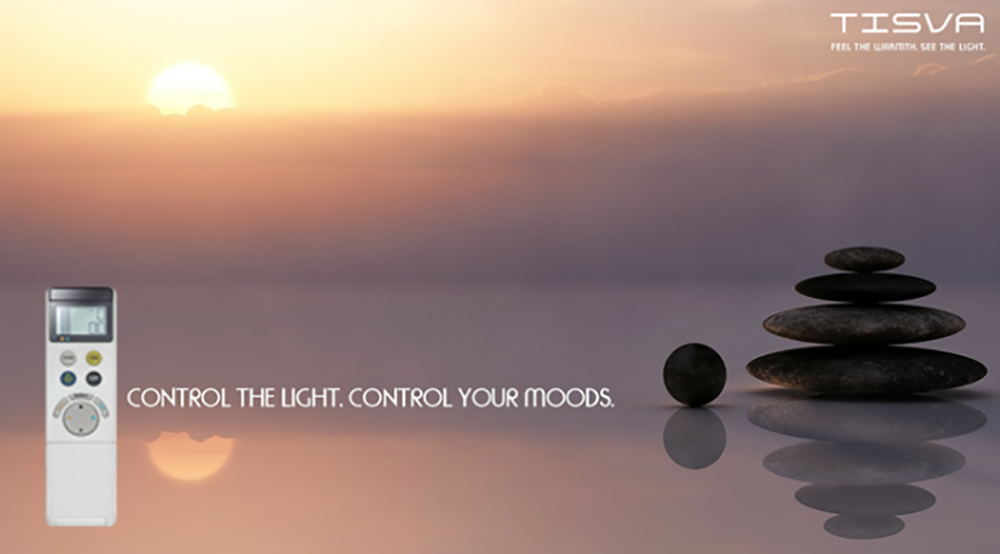
Low Pressure Sodium (LPS) Lamps
Technically speaking LPS lamps are not HID Discharge sources but are used for a few similar applications. They have high lumen output per unit but they emit a very narrow colour spectrum. As such they are never used for interior applications.
This kind of lamp consists of two tubes, one inside the other, and contains a mixture of neon and argon gases. Plus sodium metal in the inner tube. The arc is passed through the gases which cause the sodium metal to heat up giving out a yellow-amber glow. The light thereby produced is monochromatic in nature, emitting only the yellow waves of the spectrum.
As against HID lamps LPS lamps continue to emit the same amount of light throughout their life; nor are their light output affected by ambient temperatures. They continue to work till they fail to start or warm up to full light output.


